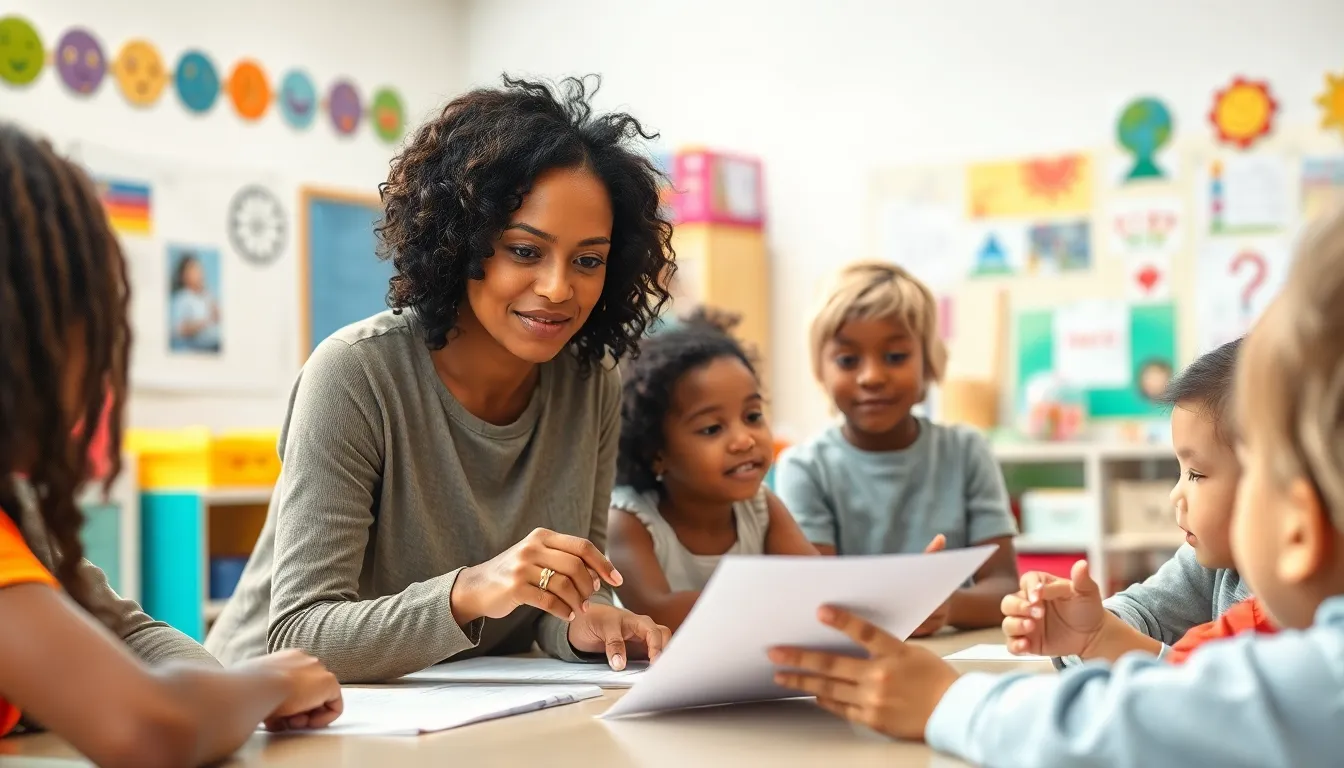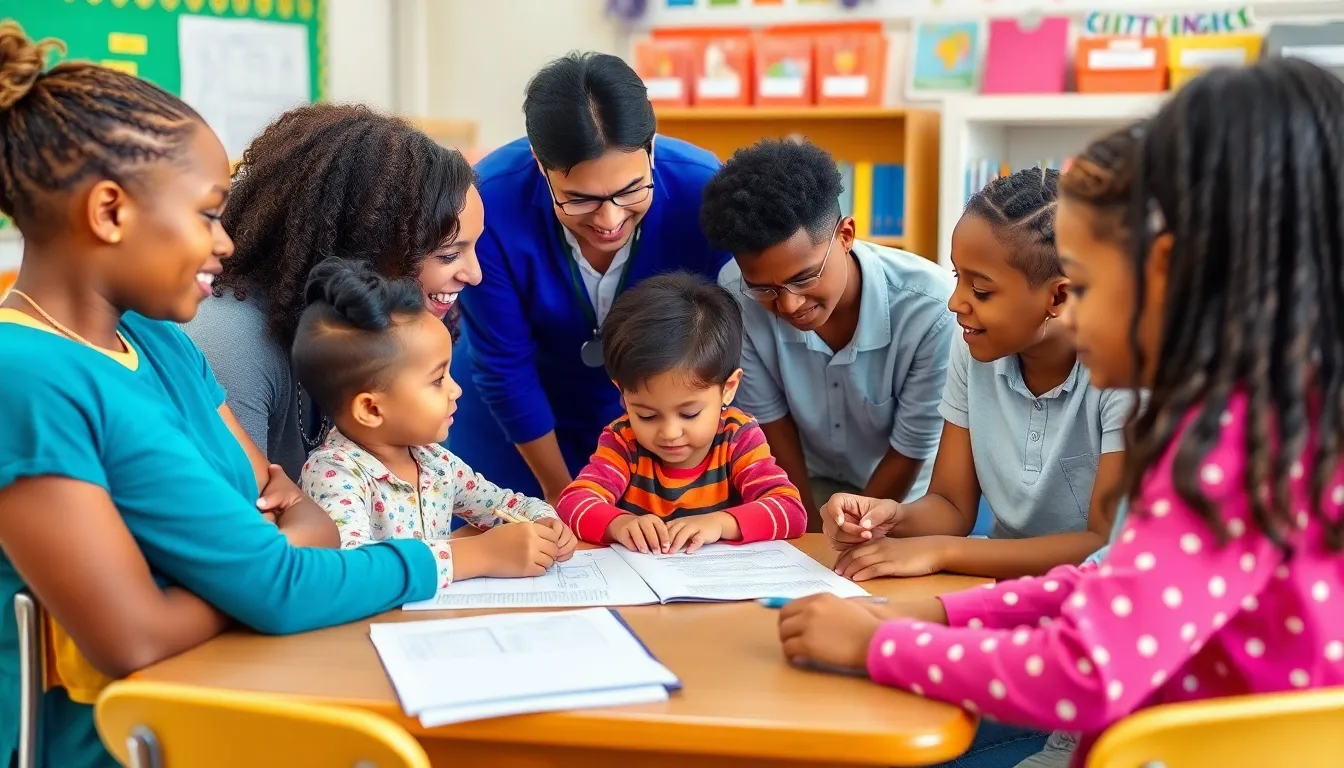Navigating the world of early childhood education can feel like trying to find a needle in a haystack—especially when it comes to Individualized Education Programs (IEPs). These tailored plans are like superhero capes for young learners, empowering them to soar above challenges and embrace their unique strengths. But let’s face it, understanding IEPs can sometimes be as confusing as deciphering toddler-speak.
Parents and educators alike need to grasp the ins and outs of IEPs to ensure that every child gets the support they deserve. With a sprinkle of humor and a dash of knowledge, this article will break down the essentials of IEPs in early childhood. Get ready to unlock the secrets of these powerful tools and discover how they can transform a child’s educational journey, one personalized plan at a time.
Table of Contents
ToggleUnderstanding IEPs for Early Childhood
IEPs, or Individualized Education Programs, play a crucial role in early childhood education. These tailored documents outline specific educational goals and the support required to meet them.
Definition of IEPs
An IEP serves as a formal plan designed for children who exhibit delays or disabilities affecting their learning capabilities. The plan outlines individualized goals tailored to the child’s unique needs, encompassing academic, social, and behavioral objectives. Specific strategies and accommodations are included to ensure that children access the general education curriculum effectively. Each IEP evolves through regular reviews, adapting to the child’s progress and changing requirements to ensure optimal support.
Importance of IEPs in Early Childhood Development
IEPs significantly influence early childhood development. They offer a structured approach to address diverse learning needs, promoting growth in essential skills such as communication, social interactions, and cognitive abilities. Early intervention enhances a child’s chances for long-term educational success. Parents and educators collaborate to create a supportive environment where children thrive. By ensuring access to appropriate resources, IEPs help unlock potential within each child, paving the way for a more confident and capable learner.
Components of IEPs for Early Childhood
IEPs for early childhood must encompass several critical components to effectively support young learners. These components include goals, objectives, assessment procedures, and necessary services.
Goals and Objectives
Goals establish what the child should achieve within a specific timeframe, while objectives break those goals into smaller, measurable steps. Each goal reflects the child’s strengths and challenges, focusing on areas such as communication, motor skills, and social interactions. Setting realistic expectations helps educators track progress. Specificity in goals allows for tailored support that meets each child’s unique needs. IEP teams should revisit these goals regularly, ensuring they remain relevant and achievable.
Assessment and Evaluation Procedures
Assessment and evaluation procedures are essential for determining a child’s current level of functioning. These procedures incorporate multiple methods, including observations, standardized tests, and family input. Parents and educators collaboratively gather data to create a comprehensive view of the child’s abilities. Regular evaluations inform the IEP team about the effectiveness of implemented strategies. Adjustments based on assessment results enhance educational outcomes, ensuring that the child receives appropriate support throughout the learning process.
Implementation of IEPs
Effective implementation of Individualized Education Programs (IEPs) requires collaboration among parents and educators. All parties involved play a crucial role in ensuring the child’s development meets set goals. Educators shape the learning environment to align with the specific needs outlined in the IEP. Parents contribute valuable insights about their child’s strengths and preferences, helping to personalize strategies for success. Active communication fosters a team approach, allowing for shared responsibility in achieving educational objectives.
Role of Educators and Parents
Educators design instructional strategies tailored to each child’s individual learning profile. They assess progress, employ different techniques, and adapt teaching methods to support various learning styles. Parents provide essential context about daily behaviors and needs outside school. Feedback from parents informs educators about which strategies work best at home and in the classroom. Both parties collaborate in decision-making, ensuring the IEP reflects ongoing developmental changes and maintains engagement from the child.
Monitoring Progress and Adjustments
Regular monitoring of a child’s progress is vital for effective IEP implementation. Educators use data from assessments and observations to evaluate if the child meets established goals. Adjustments to the IEP should occur based on collected data and parental feedback. Effective communication during meetings aids in identifying areas needing modification and support. Goals and objectives require periodic review to ensure they remain relevant and achievable, promoting continuous growth and maximizing the child’s potential.
Challenges in IEPs for Early Childhood
IEPs for early childhood face several challenges that can impede effective implementation and outcomes. Understanding these obstacles is crucial for parents and educators.
Common Obstacles
Limited resources can hinder the development and execution of IEPs. Often, early childhood programs operate within tight budgets, restricting access to specialized services and trained personnel. Communication gaps may arise between parents and educators, making it difficult to align on educational goals and necessary support. Diverse needs of children can also create complexities, as their progress varies significantly. Frequent changes in staff add to the challenge; new team members may lack familiarity with existing IEPs, which disrupts continuity of care.
Strategies for Overcoming Challenges
Building strong communication channels fosters collaboration between parents and educators. Regular meetings facilitate discussion of the child’s progress and potential modifications to the IEP. Creating a clear roadmap that outlines specific goals and timelines allows all parties to remain focused and accountable. Training for educators ensures they possess the skills required to implement IEPs effectively. Engaging community resources can provide additional support, enhancing services available for children. Utilizing technology for tracking progress improves data sharing, enabling timely adjustments to strategies when needed.
Conclusion
IEPs for early childhood play a vital role in shaping the educational journey of young learners. By providing tailored support and fostering collaboration between parents and educators, these programs create a nurturing environment that addresses individual needs. The focus on realistic goals and ongoing assessment ensures that each child can thrive and reach their full potential.
As challenges arise, maintaining open communication and adaptability is essential. With dedication and teamwork, IEPs can truly transform the learning experience, empowering children to become confident and capable individuals ready to face future educational challenges.





